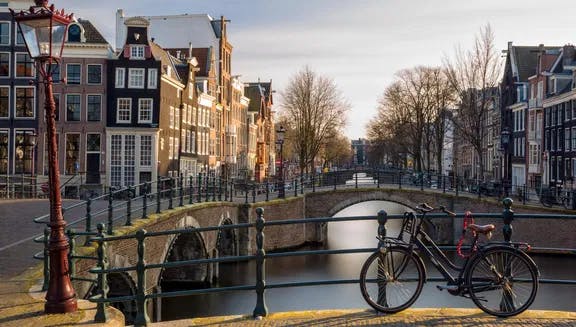
New Migration Monitor with interactive dashboard
International migration
Every few years, the Amsterdam Metropolitan Area (AMA) and IN Amsterdam commission the City of Amsterdam’s Research and Statistics department (Onderzoek en Statistiek, O&S) to create the Migration Monitor. Published in December 2023, the new report outlines the demographic and socio-economic characteristics of four groups of residents in the Amsterdam Area: recent migrants, long-term migrants, born in the AMA, and born elsewhere in the Netherlands and how migration has changed between 2013 and 2021 (the year of the latest available data).
Recent newcomers
According to the findings, the largest group of recent migrants (residents for under 10 years) come from India, with migrants from Poland and the United Kingdom being the second and the third biggest groups, respectively. Other common countries of origin include Syria, Turkey, Suriname and Morocco and EU countries such as Italy, Germany, France, Bulgaria and Spain.
Among recent immigrants, the group that indicated ‘work’ as their motive for moving to the Amsterdam Area experienced the most significant increase, comprising 17,300 people.
Domestic migration to the Amsterdam Area
The majority of residents in the Amsterdam Area were born in the Netherlands. People born in the Amsterdam Area and domestic migrants together make up 78% of residents.
Popular areas
In total, the population of the Amsterdam Area grew from 2.3 million in 2013 to over 2.5 million in 2021. Amsterdam grew the most in absolute numbers, followed by Almere and Haarlemmermeer. In relation to population numbers, Blaricum saw the biggest population increase, followed by Edam-Volendam and Diemen.
Find out more with the interactive dashboard
You can access the interactive dashboard for the report, where you can see different types of data. You can compare them and see instant visuals for the municipalities in the Amsterdam Metropolitan Area both individually and collectively. The dashboard is in Dutch, but easily navigable for non-Dutch speakers. You can also read the full report (in Dutch) on the AMA’s website.
Related articles

Easing into life in the Netherlands: the IamExpat Fair

Changes in rules and regulations in the Netherlands for 2024

RNI Registrations available again at IN Amsterdam

Announcing IN Amsterdam’s new online tool for appointments

What’s changing in the Netherlands in summer 2024

New relocation app for international talent

New insights into talent attraction and retention

What’s changing in the Netherlands in 2025

The role of international talent in tackling healthcare shortages in the Netherlands
